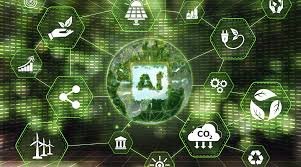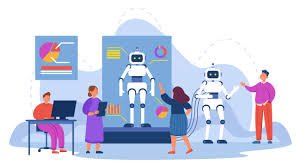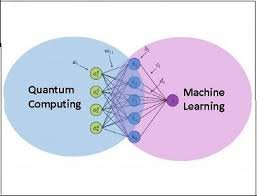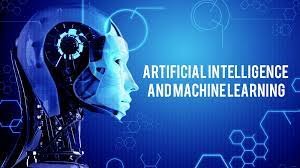The AI and ML landscape is changing rapidly, and several key trends will define its future. Here are some major trends to follow:
1. Generative AI

Generative models, like GPT-4, DALL·E, and Midjourney, are gaining traction. These AI systems are capable of creating text, images, music, and even videos from simple prompts. The growth of Generative AI is changing industries such as content creation, entertainment, and marketing.
LLMs continue maturing, finding new avenues for refinement of their reasoning, contextual analysis, and creativity.
2. AI Ethics and Responsible AI

The growing capability of AI draws ever greater scrutiny toward its ethical use. Topics such as bias mitigation, transparency, and accountability remain essential to efforts aimed at ensuring that AI benefits everyone involved without any accidental harm.
Explainable AI (XAI) is being increasingly adopted to provide individuals with insight into how decisions are reached by AI, hence generating confidence and compliance in sensitive domains-perhaps none more so than the health and finance sectors.
3. Edge AI

Edge computing brings AI closer to where data is produced. Edge AI allows latency to be reduced through on-device processing of data on local devices (cell phones, IoT devices, or autonomous vehicles), consuming much less power and bandwidth, producing systems that are quicker and more efficient.
This trend is vital for real-time applications including autonomous driving, industrial automation, and smart cities.
4. Artificial Intelligence in Healthcare

Artificial intelligence is transforming healthcare through improved diagnostic accuracy, personalized medicine, and assisting in drug discovery.
AI-driven diagnostics offer better outcomes with advances in image recognition, natural language processing (NLP) for medical records, and predictive analytics.
5. AI and Automation

AI-powered automation continues to take the lead, rehauling every single sector, from robotic process automation (RPA) in business to AI-powered automation in manufacturing, with machines learning how to perform highly intricate functions.
The convergence of AI and business-process management (BPM) software is streamlining workflows and enhancing decision-making.
6. AI in Cybersecurity

With an uptick of cyber threats, AI is becoming increasingly crucial in threat detection and response. The quantitative models evaluate vast datasets for patterns, eventually allowing for the detection of anomalies that signal a potential breach.
AI is also being leveraged in automating security responses and, as a result, providing quick and accurate counterattacks.
7. AI for Sustainability

AI is introduced as a solution for environmental issues like climate change, energy efficiency, and waste management.
Machine learning models contribute towards minimizing energy loads in industries, geminating sustainable farming practices, even analyzing environmental data to predict and avert natural disasters.
READ ALSO: SBI Recruitment 2024
8. Federated Learning

Federated learning is training and modeling machine learning directly on decentralized devices in which statistical or general information is exchanged on model updates without transmitting the raw data back to a dataset.
It allows AI to develop on various types of datasets while guaranteeing anonymity and restricting centralized data collection.
9. AI-Driven Personalization

The ability of AI to provide personalized experiences is increasing sharply, from retail (offering personalized recommendations) to digital marketing (tailoring ads and content).
Reinforcement learning is frequently used to enable dynamic tuning in adapting personalization strategies in real-time.
10. Quantum Machine Learning

With the rise of quantum computing, in its infancy, development governmental of AI has begun converging into improving machine learning processes executing faster.
Quantum computers can solve certain problems much faster than classical ones, and the marriage of both worlds could revolutionize drug discoveries, optimization problems, and cryptography.
11. Artificial Intelligence in Natural Language Processing

There is more improvement in the NLP model, focusing on recognizing languages, emotion recognition, and understanding context.
Conversational AI in places like chatbots and virtual assistants has improved its intelligence and resemblance to human-like traits, enabling enhanced customer service experiences across sectors.
12. AI in Finance

Artificial intelligence is more prevalent in financial services, spanning fraud detection, risk management, algorithmic trading, and credit scoring.
AI-powered robo-advisors are reshaping the products in.ai-arts and other investments into offering personalized, financial advice to a much wider range.
13. Creative Intelligence

AI is used by artists and designers to push the limits of creativity. AI tools are used to independently or cooperatively create works of art, music, writing, and video content.
AI is gaining recognition as an important aspect of content generation, the design of games, and film production in making workflows more seamless and anyway new.
14. AI Governance and Regulation

Governments and organizations around the world are now concerned with regulating AI to promote the most efficient use of the technology and guarantee it’s fair access. This encompasses the creation of AI governance frameworks and enacting policies to govern data privacy, security, and accountability.
The emphasis is shifting toward a global consensus to set the benchmarks of AI growth and deployment.
15. Human-AI Collaboration

Rather than full-on replacement of the skills of a human, AI systems are focused now on furthering constructive human an intervention toward achieving other capabilities. These include those integrated systems, which would help doctors, engineers, and other professionals in making better decisions and elevating certain productivity levels.
It is with AI that techniques of coding and researches are becoming indispensable to innovation and problem-solving.
The ever-evolving landscape of AI and machine learning is seeing new technologies and applications emerging all the time as we speak. Thusforth, AI is destined further to permeate more and more into the daily life, enhancing efficiency, creativity, and innovation across all sections.
